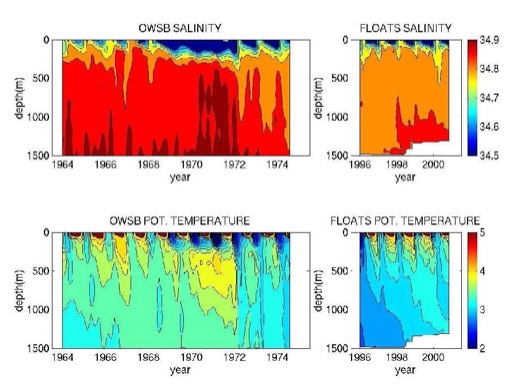Link to Lecture 20 slide show: 20_convection.mov
The buoyancy-driven flows of the ocean are a much harder theoretical problem than the wind-driven motion. Equations are non-linear and mixing processes are critical, yet poorly understood. We don’t understand very well what sets the size or regions of deep water formation.
The figure on the right shows measurements of deep water formation in the Labrador Sea.
Convection occurs towards the end of the winter season, when surface waters are coldest. Mixing to 1500 m deep is common. Notice that there are some years when deep convection does not occur. During these years there is an export of warmer, saltier Labrador Sea Water.
Deep convection is not synonymous with overturning (mass transport). From float and current meter measurements in the Labrador Sea, water is seen to flow up and down within a convection chimney: there is no net transport of waters to depth. Current theory suggests that convective mixing creates a large reservoir of deep waters in the interior of the gyre, which is only mixed across isopycnals into the boundary current via instability processes (eddies) (e.g. Straneo, Spall, Pickart). Although float data is not quite so clear on export pathways (e.g. Lavender and Davis).
In cases where deep convection occurs in a semi-enclosed basin, such as the Greenland Sea and the Mediterranean Sea, it leads almost entirely to an overturning circulation.




